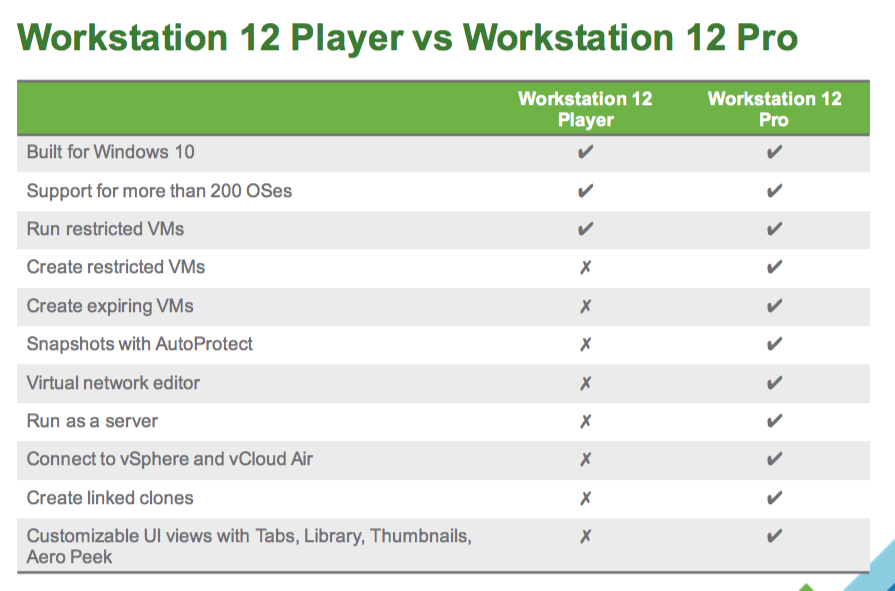
After the download is finished run the installation package. VMware vCenter Converter Standalone is available on official VMware website for free, you must only fill the registration form.
#Parallels versus vmware how to#
How to run Parallels Desktop virtual machine in VMware Workstation However VMware developed virtual machine converter called VMware vCenter Converter Standalone that is able to convert Parallels Desktop virtual machines (.pvm file extension) to VMware Workstation Virtual Machine Disk file format (.vmdk file extension) as well as it is also able to convert other virtual machines from Windows Virtual PC (.vhd), Virtual Server, Microsoft Hyper-V (.vhdx) and from computer backup images created by Acronis TrueImage (.tib), Symantec LiveState (.sv2i), StorageCraft ShadowStor (.spf) etc. If you need to run any Parallels Desktop virtual machine in VMware Workstation you will hit a snag, because VMware Workstation will be not able to open, or import it to its virtual machine format. Parallels Desktop is the same solution but most popular on Mac computers. It helps users to create virtualized computers with Microsoft Windows, Linux, Unix, or BSD operating systems on one physical computer.
#Parallels versus vmware update#
But Parallels has been working harder, while VMware seems to have ramped down promotion and barely even mentioned this update to the press.VMware Workstation is one of the most used computer virtualization solution for Microsoft Windows. VMware and Parallels have spent six years vying for dominance, each leapfrogging their rival with new features and increased performance. In Parallels' case, this integration is ironically muddied by an additional Crystal Mode: the difference between the two is not clear. These days, both Fusion and Parallels mix well with Windows, in their Unity and Coherence modes respectively. On its debut, Fusion was well received for its stability and advanced Windows integration. Parallels is priced at $79.00, or $49.00 as an upgrade from the two previous versions.

There's support for Windows 9 but, given the Mac's lack of compatible hardware, there's no touchscreen distraction. New features include the ability to expand video performance with up to 2 GB of video memory. You can toggle power-saving on a per-VM basis from the Settings panel. This is noteworthy, since Parallels 9 has a more frugal power mode to ease the battery burden of this processor-intensive software. Notifications now pop up for certain actions, such as when taking a MacBook off mains power. Its Desktop 9 software officially supports OS X Mountain Lion, including full-screen mode and the new Retina displays. Parallels' core business is running Windows in OS X. We took a closer look at these two powerful applications to see how they compare in their latest respective versions: Parallels 9 and Fusion.
#Parallels versus vmware for mac#
There are three clear options: the open-source and free but limited VirtualBox, or one of the two commercial packages, Parallels Desktop 9 for Mac or VMware Fusion.Įither of the latter are easier to work with than VirtualBox, with broadly similar qualities and very decent performance.


Whether you are Running Windows 8 or Windows 7 on a Mac or a MacBook it is simple with virtualisation software, so you need never have to reboot to switch operating systems again.


 0 kommentar(er)
0 kommentar(er)
